Reflections on booking and upgrading the German BMP "Puma"
Armored protection "Pumas"
The Puma platform uses the concept of a modular reservation, in which the level of protection can be adjusted according to the level of threats. This concept also allowed the Puma air transportability to be maintained, although at the same time it is much better protected than other armored vehicles. It can be transported by Airbus A400M military transport aircraft, although there is one nuance. For every three Puma vehicles, four A400M aircraft are needed, a fourth aircraft is needed to transport the modular armor sets of these vehicles. In addition, modular armor makes it easy to replace damaged segments, a similar idea is implemented in some sets of mounted armor as early as 90's. Puma's mass ranges from 31,5 to 43 tons in a heavy combat configuration with all-round protection against medium-caliber shells and RPGs.
Side armor without DZ blocks, part of hinged ceramic armor removed
Up to two layers of hinged armor can be attached to the sides of the Puma machine, made of armored steel, through damping bolts. This hinged passive armor is most likely made of a ceramic composite material. According to the company Rheinmetall Chempro (a subsidiary of the German Rheinmetall), one of the suppliers of armor for the Puma project, in this vehicle the BMP, in addition to other types of armor, used the system of composite armor AM AR-B developed by IBD Deisenroth. As for shells of kinetic action, the specific strength of AMAP-B in this case is almost four times higher than the specific strength of ordinary and alloyed armor steel.
Layers of Ceramic Armor
AMAR-B's light and medium versions, which provide protection that corresponds to the level 1-6 of the NATO standard STANAG 4569, use alloyed steel with a nanometer structure and nano-ceramics. These modern materials have a modified microstructure (in the case of ceramics, the grain size is less than a micrometer, that is, we can speak about nanometers). As a result, they have increased strength and reduced tendency to crack formation in the event of a second strike of an armor-piercing projectile. On the basis of external examination and protection requirements, it can be assumed that Puma side armor modules are a “pie” consisting of a nanoceramic plate glued to a flexible aramid substrate covered with a steel plate. Ceramics for this reservation are supplied by CeramTec-ETEC GmbH.
It is possible that only one of the two layers of passive armor is necessary to protect against 14,5-mm armor-piercing bullets, and the second layer is part of the additional armor to protect against medium-caliber ammunition. From what exactly the caliber protects the armor of the Puma machine is unknown, but according to the manufacturer, at least from the 30-mm armor-piercing pierced piercing shells (BOPS). According to some experts, the actual level of protection is significantly higher. The MTO air inlet is also closed by an additional armor module made of inclined spaced metal plates (alloy steel was assumed to be used instead of nonballistic low carbon steel).
During the development of armor hull "Puma" changed several times. Initially, on all the first five prototypes, it consisted only of thick passive composite armor. At the time of the announcement of the production of a pre-install batch, Puma machines already had thicker passive armor with box-type modules. These machines also featured trellised screens extended to the center of the road wheels. Then there were two options, apparently, only with a dynamic protection system. In the final configuration, DZ blocks are installed in the upper part of the sides, passive armor in the center and lattice screens in the lowest part (that is, up to the support rollers). The stern of the machine is also covered with latticed screens.
CLARA (Composite Lightweight Adaptable Reactive Armor), supplied by Dynamit Nobel Defense (DND), uses fiber composite panels without metal components in order to reduce the likelihood of damage to nearby infantry by metal fragments. According to a DND company representative, this DZ system provides, at least in 10, the best protection per unit mass compared to “regular” armor (perhaps here meant ordinary armored steel), but it cannot cope with tandem combat units. Judging by the patents obtained by DND, it can be a multi-layer DZ with two reactive layers and one passive. There are light and heavy versions of CLARA DZ; judging by the thickness and weight of the DZ blocks, it seems that a heavy variant is used on the Puma machine. Verseidag Indutex Ultrax plates (part of Rheinmetall Verseidag) are also installed on the machine to protect against 30-mm BOPS and impact core type shells.
Tower "Puma" on the assembly. Compositional Armor Sheets Not Yet Installed
The remotely controlled tower of the Puma machine is welded from aluminum sheets. Aluminum should be welded at a constant temperature, which suggests that a more advanced alloy is being used, rather than the standard 5083 aluminum alloy, which was widely used in the manufacture of M113 and M2 Bradley armored vehicles. The 5083 alloy, in fact, does not give any weight savings compared to steel; In some cases, to provide the same level of protection, an aluminum sheet is more than three times thicker than a sheet of armor steel.
The company Aleris said that it supplied aluminum armor for the manufacture of prototypes "Puma"; although not officially confirmed, but apparently. Aleris also supplied aluminum alloy armor for the Puma series models. The alloys that Aleris manufactures and which can be used to make the Puma Tower include aluminum alloys of the grades AA2519 and AA7039. With the same level of protection, they allow you to save from 15 to 20 weight percent compared to aluminum grade 5059 (in turn, much stronger than the old 5083 alloy).
Additional AMAR-B composite armor plates are mounted on the basic structure of the aluminum tower. To protect against 14,5-mm armor-piercing bullets, one plate is used; To protect against 30-mm projectiles, an additional layer of mounted composite armor modules can be attached.
The close-up of the sloped armored plate of the Puma machine
The sloped armor plate at Puma most likely consists of the non-explosive reactive armor NERA (non-explosive reactive armor) installed under the slope, as well as the composite armor modules that are bolted to the steel case. Layer NERA is located above the main armor. NERA, as a rule, consists of two metal (steel, aluminum or titanium) layers, between which a layer of compressed elastic material, for example, rubber, is placed. Upon impact, the rubber expands and the upper plate expands. This is a very effective way of dealing with a jet of a shaped charge, which is often loaded with rocket-propelled grenades and ATGMs. Swelling causes the metal to move towards the cumulative jet, having a destructive effect on it. In the photos (see below), we see only one layer of NERA, but theoretically there could be a sandwich of several separated layers. Most likely, in DZ NERA on the Puma armored vehicle is not used rubber, but a modern composite material.
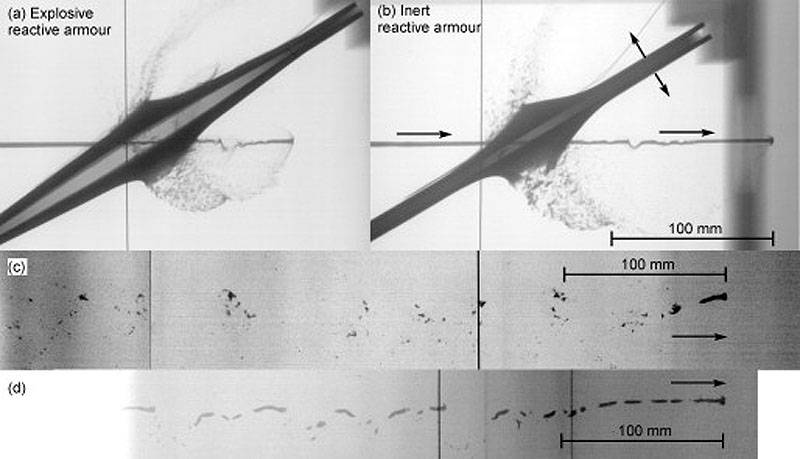
Non-explosive (inert) reactive armor (b) destroys the cumulative jet (d) due to the same mechanism as the classic DZ (a and c)
According to Rheinmetall Chempro and IBD Deisenroth Engineering, the Puma BMP is also equipped with AMAP-SC composite armor, which, compared to traditional armored steel, provides the same protection against cumulative projectiles with the same mass in 8-10. Modules of composite armor, bolted to the hull under the NERA DZ, most likely used nanoceramics. According to experts, ceramic armor provides twice the best protection against shaped charges compared to steel.
Puma case on assembly
The Puma case is made of steel. On the first machines (pre-production or installation batch), bending and welding of steel sheets took four months. Parts of the hull are manufactured according to the “Dunnblech-Biegetechnologie” technology (thin sheet metal bending technology), which is also used in the manufacture of the Boxer multipurpose armored vehicle. The body is welded from pre-bent steel sheets, which allows to reduce their range of sheets. Also, this technology allows the use of thinner steel sheets (weight reduction) and reduce the number of weak and vulnerable spots in which material integrity can be disturbed if armor-piercing shells hit and mines and improvised explosive devices explode.
The actual thickness of the armor (without tilting) of the front part of the Puma machine can be seen in the photo above. On finished machines, this thickness, of course, can no longer be determined, including due to the driver’s viewing devices protruding from the inclined front sheet. The frontal projection of the Puma case is protected from medium-sized ammunition (for example, 30-mm BOPS). projectile-type projectiles, as well as rocket-propelled grenades with cumulative warheads. Considering the slope, significantly more 300 mm should be allocated for armor. Although it is worth noting that maybe about half of it can occupy an empty volume, which is necessary for the destructive effect of DZ NERA.
The base tower of the Puma armored vehicle provides all-round protection against 14,5-mm armor-piercing bullets of large-caliber machine guns and sniper rifles. The Puma Tower can be equipped with additional armor to provide protection against medium caliber ammunition, large fragments of artillery shells and cluster munitions submarines. With the exception of a small curved section behind the cannon (which moves when the cannon is raised), the additional armor on the roof consists of the “Igelpanzerung” (lit., hedgehog armor), which consists of a variety of rubber spikes that destroy the cumulative submarines of cluster artillery munitions. "Studded" protection over the ammunition for unknown reasons, separated from the main armor. Above the habitable compartment, the rooftop armor consists of thicker composite sheets or two thinner sheets. It is worth recalling that artillery cluster munitions with cumulative submarines can penetrate more than 200 mm of armor steel.
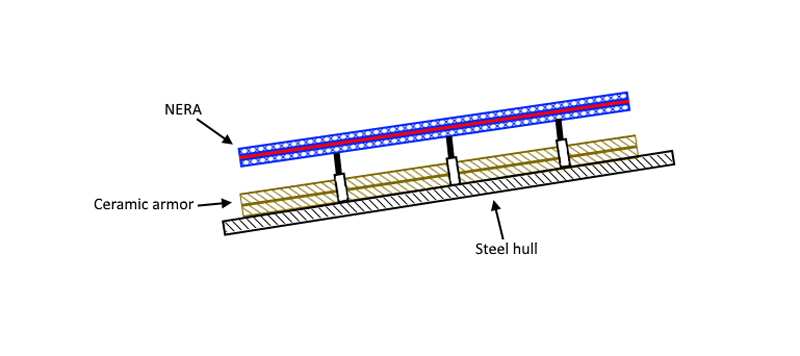
The estimated structure of the upper body armor
Apparently, the Puma armored vehicle is currently the most protected infantry fighting vehicle in the world; here it can only compete with the heavy BMP T-15 on the Armata platform after being adopted by the Russian army. To protect against ATGM, the Puma machine is equipped with a MUSS complex, which is being tested in the UK in order to assess the possibility of its installation on the Challenger 2 tank and other combat vehicles.
Future upgrades
The Puma should be equipped with a MELLS universal launcher for launching Spike-LR anti-tank systems, but this process is hampered by various problems (first, the original rocket did not meet German accuracy requirements during the first test series, then there were problems with the launcher there are problems with financing). An additional installation of a TSWA armament independent of the tower must also be installed, but due to the changing requirements of the German army, the developers were forced to change its design. The original installation (photo below) had six 76-mm grenades (lethal and non-lethal) with a relatively small radius of action. The ring-type setup is now charging 24 40-mm air blow grenades.
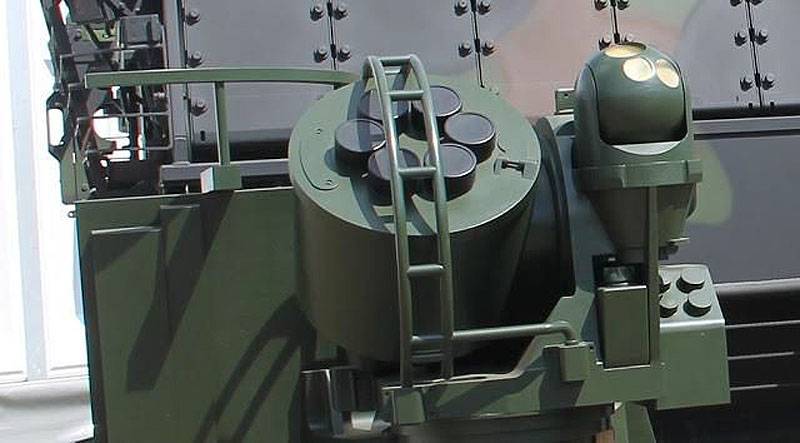
There are other plans for modernization. The 5,56 mm machine gun is to be replaced by a 7,62 mm machine gun. Puma should also be equipped with Rheinmetall's SAS 360 situational awareness system. There are plans to upgrade the computer system, which would allow control of ground-based robotic vehicles. But here a number of questions arise. Will it be a modified version of the Puma to accommodate several devices and places for their operators (then there is no room for landing)? Or each Puma vehicle (while remaining a traditional infantry fighting vehicle) will be able to control one or more robots? In the second case, who will then control the robotic vehicle if the landing force dismounted, because the gunner, commander or driver are busy with their direct duties.
In addition, Krauss-Maffei Wegmann developed the IWS-35 remotely-controlled combat module with the same opto-electronics as installed on the Puma BMP. The module is armed with a Bushmaster III 35-mm cannon with a chain drive and an 12,7-mm machine gun paired with it. Bushmaster III gun with external power may, after replacing the barrel and a few parts, can fire 50-mm SuperShot ammunition. It is possible that the company is going to offer the Puma armored vehicle with an IWS-35 module with a Bushmaster III cannon for export.
Materials used: Alex Alexeev
www.shephardmedia.com
www.bundeswehr.de
www.kmweg.com
appliedmechanics.asmedigitalcollection.asme.org
www.blogger.com
imgur.com
www.wikipedia.org
en.wikipedia.org
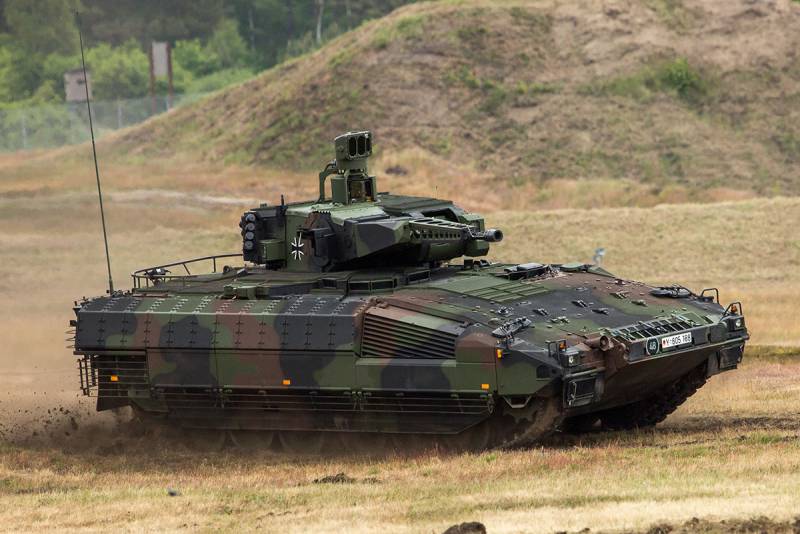
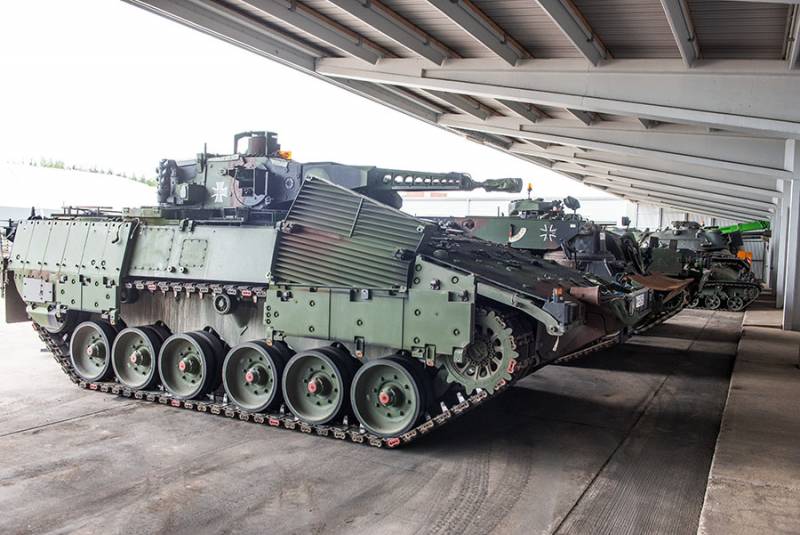
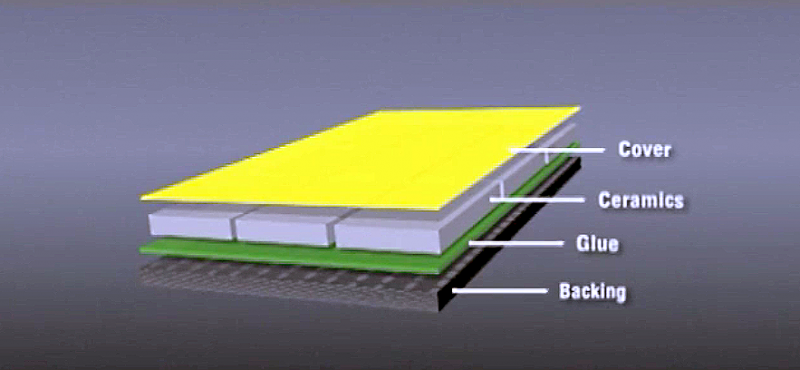
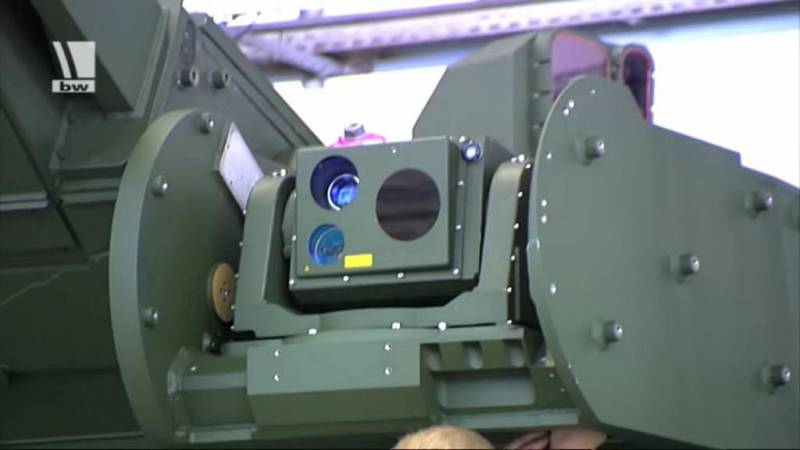
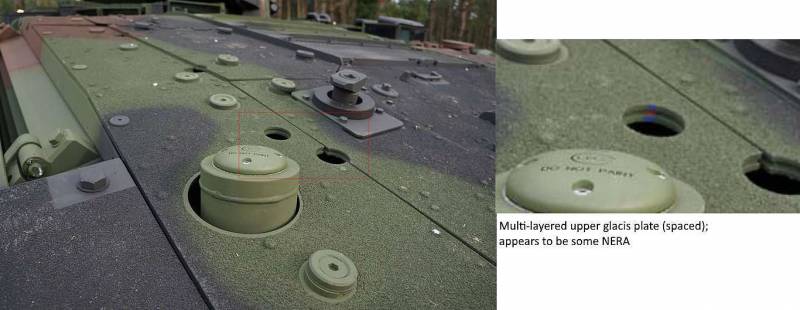
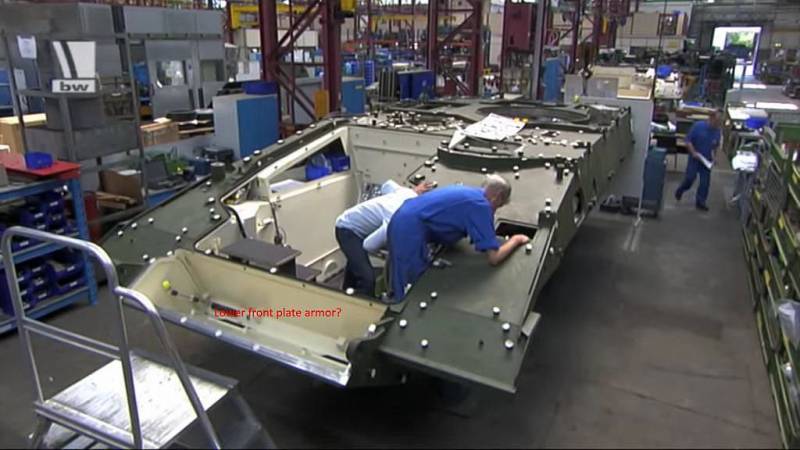
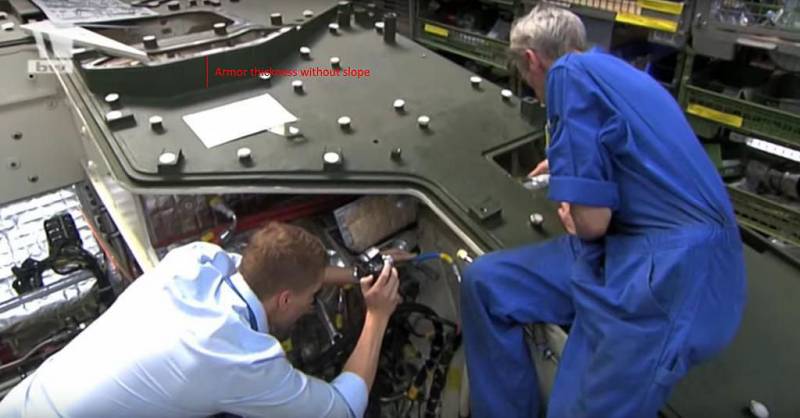
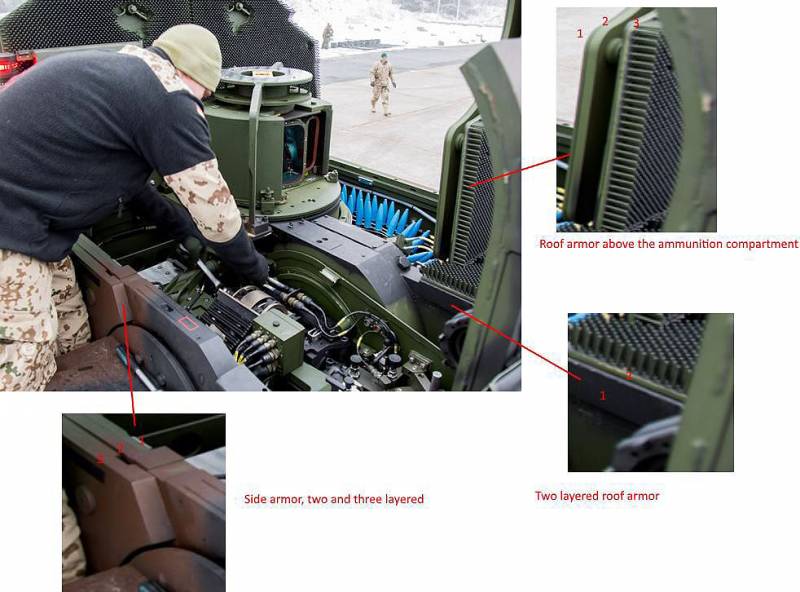
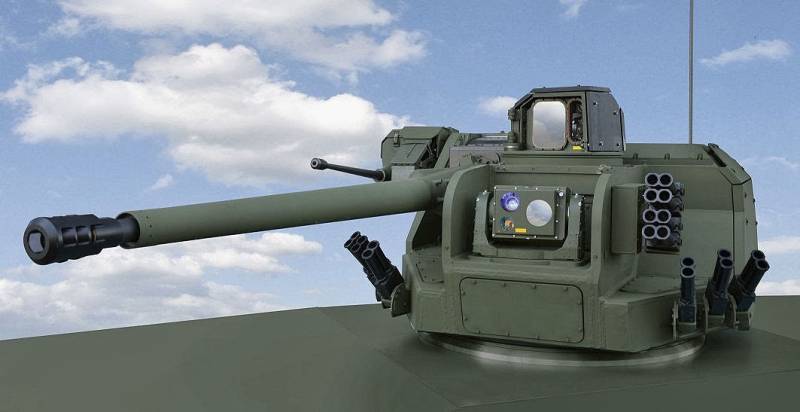
Information